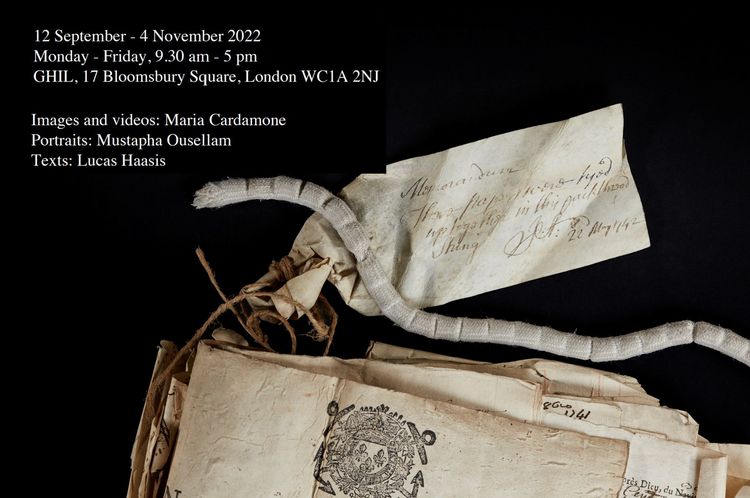Captured. The Materiality of the Prize Papers
Captured. The Materiality of the Prize Papers
A Photography Exhibition at the German Historical Institute London
The exhibition is part of the conference “Things on the move: Materiality of Objects in Global and Imperial Trajectories, 1700–1900”, organised by the German Historical Institute London in collaboration with the Prize Papers Project (8-10 September 2022)

A Photography Exhibition at the German Historical Institute London
The Prize Papers are records and objects that were confiscated by British privateers and naval vessels between 1652 and 1815 – a period of time in which the seizure of ships was still a legitimate form of tactical warfare. The Prize Papers collection at The National Archives, UK still holds thousands of documents and various objects that have not been seen or touched for centuries. As a result, the records and artefacts belonging to the High Court of Admiralty’s collections HCA 30 and HCA 32 have survived in a condition rarely found in archives across the globe, with many records preserved exactly as they were archived during the Early Modern period.
Artefacts from life onboard ships, ranging from playing cards to keys, sailors’ notebooks containing fragile chalk writing, court bundles that were once stitched together by clerks and hundreds of letters that either have never been opened or have been preserved still folded, can be found in the collection. Some of these letters also contain their original enclosures, such as coffee beans or glass beads.
This photography exhibition at the German Historical Institute London presents a curated selection of pieces from the Prize Papers collection. It features the Prize Papers Project’s special materiality approach, which has been developed in collaboration with archivists, conservators, photographers, historians, and IT-specialists. The exhibition also showcases the unique imaging formats that are used to document the collection’s materiality and cover the research potential of the collection. The objects, papers and document bundles shown in the pictures demonstrate the global interconnectedness of Europe and the wider world during the age of sail, as their places of origin range from Europe to the Caribbean and East Asia. They also represent an era of European colonial expansion and resistance.

